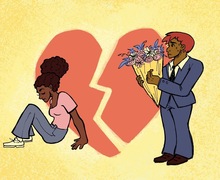Syracuse community members worried about SU students spreading coronavirus
Elizabeth Billman | Senior Staff Photographer
SU is entering its seventh week of classes.
The Daily Orange is a nonprofit newsroom that receives no funding from Syracuse University. Consider donating today to support our mission.
Jeff Fuchs, a resident of the University Neighborhood, knows the coronavirus would cause more severe complications for him than it would for his younger neighbors.
Fuchs, who is over 70 years old, lives alongside Syracuse University students in the neighborhood adjacent to campus. As someone who is more susceptible to the virus, he’s observed students residing in the area gathering in large groups and violating social distancing guidelines, he said.
“There are a lot of students who are good and friendly and responsible and good neighbors,” Fuchs said. “And there are plenty of students who are the exact opposite.”
Fuchs is one of several residents of the University Neighborhood who isn’t a student but whose health and safety is closely tied to that of SU’s campus. While SU has yet to see a large spike in COVID-19 cases among students, some residents in the surrounding neighborhood worry about the consequences for themselves and their families when students violate social distancing guidelines.
“We’ve been pretty impressed with what the university is doing for the students on campus,” said Mike Stanton, president of the Southeast University Neighborhood Association. “The real risk is what happens with the students who live off campus and go to events off campus.”
Abby Weiss | Asst. News Digital Editor
Fuchs has seen the neighborhood “somewhat calm down” since the beginning of the semester. He believes this is partially due to the colder weather and because some neighborhood residents complained to the university about students misbehaving.
At the beginning of the semester, SU was unresponsive when local residents reported social distancing violations, Fuchs said.
“We finally got the ear of the university and they’ve finally started to pay attention to the neighborhood a little bit,” Fuchs said. “There are still houses that are not cooperating, but they are less repulsive than they were before.”
Jane Hudson, another resident of the University Neighborhood, said that when she called the Department of Public Safety to report a social distancing violation, she was told the department was responding to five calls ahead of hers. The students dispersed before DPS arrived, she said.
The university has said it would work with landlords in off-campus neighborhoods to promote its public health guidelines. Under SU’s guidelines, students must limit social gatherings to under 25 people and wear a mask at all times, among other requirements.
The cooler weather could increase the virus’ transmission if students begin gathering indoors instead of outdoors, Stanton said. One large indoor gathering with an infected individual in attendance could cause a spike in cases, he said.
SU’s location in Onondaga County gives the university an advantage in preventing virus transmission on and around campus, Stanton said. Onondaga County and the central New York region have reported relatively low COVID-19 positivity rates throughout the summer and into the fall.
“I think one of the saving graces is that Onondaga County has been doing so well and central New York has been doing so well,” Stanton said. “But what worries us is that so many people will be coming from states that aren’t doing well as the school reopened.”
In compliance with Gov. Andrew Cuomo’s travel advisory, SU required students coming from COVID-19 hotspots to self-quarantine for 14 days before moving in. The order impacted over 3,000 SU students this fall.
A group of students living off-campus who contracted COVID-19 earlier this fall told The Daily Orange they caught the virus from another infected student who did not complete the quarantine requirement before arriving at SU.
Despite his concerns, Stanton said he’s impressed by how SU has handled the restart of in-person classes.
SU required all students to submit a negative COVID-19 test result prior to arriving on campus and has conducted multiple rounds of pooled saliva testing since students arrived. Some students seem to think their gatherings aren’t dangerous because they’ve tested negative, Hudson said.
“I don’t know why there is this belief that if they get their nose swabbed they’re protected,” she said. “We want people to be safe.”
Hudson would like to see more cooperation among students living in the University Neighborhood when it comes to abiding by social distancing guidelines. Since the start of the semester, she’s opted to go grocery shopping in the suburbs instead of shopping at her local grocery store, which students commonly frequent.
“If you’re old enough to live in the community off campus, you should be old enough to not put your fellow man at risk,” Hudson said. “It is particularly heinous given the pandemic.”
Published on October 4, 2020 at 8:56 pm
Contact Mira: mlberenb@syr.edu






